Imagine a place where the past dances with the present, where every alley has a story, and the river flows with tales as old as time itself. Welcome to Varanasi, also known as Benaras or Kashi, India’s spiritual nucleus and possibly the oldest living city in the world. Here, life and death coalesce along the sacred Ganges, offering a unique spectacle that draws millions into its enigmatic embrace. Whether you’re here to soak in the spirituality, witness the cultural vibrancy, or simply explore a city unlike any other, Varanasi promises an unforgettable journey.
Planning a trip to Varanasi soon? Well, then this Varanasi Travel Guide will help you in doing so! I have shared all the details in this article including where to stay in Varanasi, how to travel within Varanasi, what to eat, a shopping guide, and lots more.
Varanasi, an ancient city in India, is one of the most fascinating places that I have ever visited. This vibrant and lively city receives pilgrims and tourists throughout the year who are looking for different things over here. Some come here to celebrate life while others come to celebrate an important milestone in their life.
Whatever may be the case, you will always find the streets of Varanasi bustling with tourists. There are lots of people taking bath in the sacred River Ganga along the Ghats. This is one vibrant and lively city that anyone who wishes to experience India should visit.
Planning a trip to Varanasi soon? Well, then this Varanasi Travel Guide will help you in doing so! I have shared all the details in this article including where to stay in Varanasi, how to travel within Varanasi, what to eat, a shopping guide, and lots more.
![]()
Welcome to Varanasi: A Prelude
Varanasi holds a place of immense sanctity in India, potentially ranking as the world’s oldest continuously inhabited city with a rich historical tapestry. Originally known as Kashi—a name derived from the Sanskrit word for “to shine,” leading to its nickname, the “City of Lights”—it was renamed Varanasi in 1956. The city’s origins are deeply rooted in Hindu mythology, believed to have been founded by Lord Shiva, the deity of creation and destruction, making it a revered second home for him. The presence of the Kashi Vishwanath Temple, dedicated to Lord Shiva, underscores the city’s divine significance.
Legend has it that dying in Varanasi brings about moksha, liberating the soul from the cycle of rebirth, a belief that draws countless elderly individuals to spend their final days in this sacred city. Furthermore, taking a dip in the holy Ganges River is thought to purify one of all sins, adding to the city’s spiritual allure.
Varanasi’s sacredness is not limited to Hinduism; it is also a significant site for Buddhism. It was here that Gautama Buddha delivered his inaugural sermon on Buddhism in 528 BC, making the nearby town of Sarnath a key pilgrimage destination featuring Buddhist temples, stupas, and historical sites.
Timing Your Visit: Seasons of Serenity and Celebration
Varanasi’s charm unfolds year-round, but the best time to visit is from November to February. The winter months offer cool, pleasant weather, perfect for exploring the city’s labyrinthine lanes and vibrant ghats. Each season in Varanasi has its own allure, from the spiritual fervor of Shivratri to the colorful boat processions of Dev Deepawali. Choose your travel dates to match the experiences you seek, be it the serene winters or the festive fervor that envelops the city at various times of the year.
Getting There
Located in Uttar Pradesh, Varanasi is around 300 km from Lucknow which is the state capital, and 800 km from Delhi which is the national capital. The city is well-connected to the rest of India through roads and railways. The city is also accessible by air via the Lal Bahadur Shastri International Airport, which welcomes flights from major cities across India and select international destinations. Train travelers will find Varanasi Junction and Mughal Sarai Railway Station gateways to this ancient city, linking it with the vast Indian railway network. Road travelers can also easily reach Varanasi, with well-maintained highways connecting it to nearby cities and states.
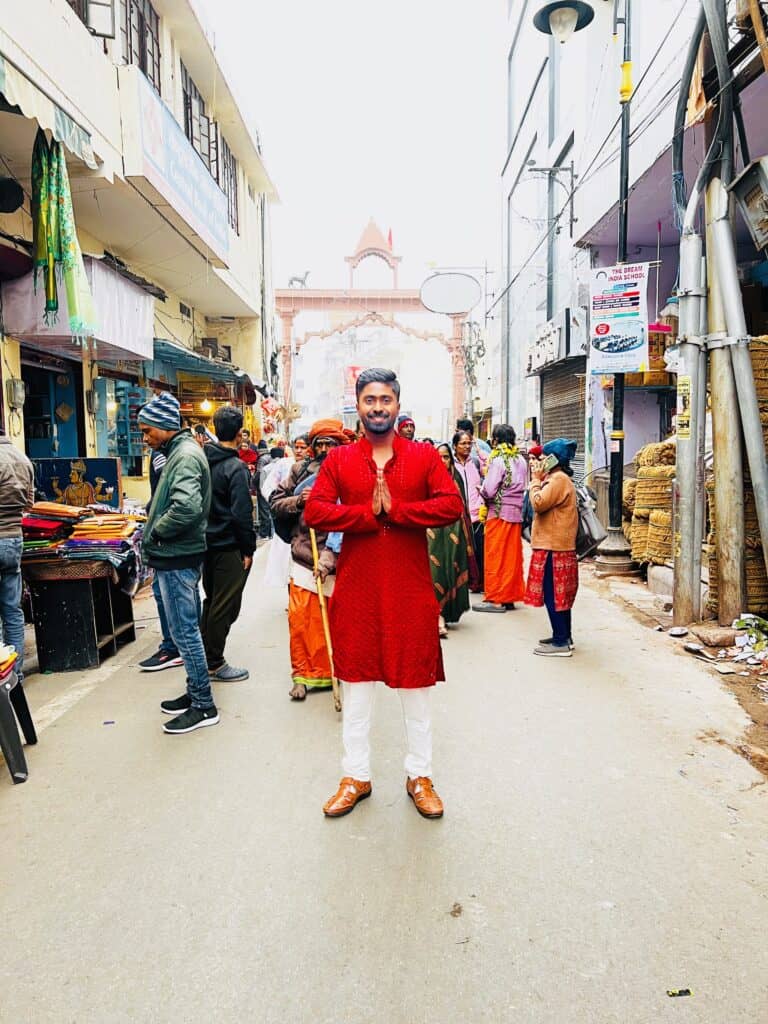
Navigating the Heart of Varanasi- Travel within the city
Varanasi’s essence is best captured on foot, especially along the ghats and in the old city’s narrow alleys. For longer distances, auto-rickshaws, e-rickshaws, and boats are your best bet. Auto-rickshaws are ideal for trips from the railway station or airport to your accommodation, while boats offer a serene way to experience the Ganges and connect you from one ghat to another, providing a different perspective of the city’s sacred landscape.


Traveler’s Compass: Tips for the Varanasi Voyage
- Dress Conservatively: Well, Varanasi is the spiritual capital of India so it is imperative that you wear modest clothing to avoid unwanted attention. You don’t have to wear a suit or saree but you can wear tops and long skirts to keep your shoulders and legs covered at all times.
- Stay Scam-Savvy: There are a lot of scams happening daily with tourists in Varanasi so, I would recommend you to be careful here. A few common ones are where locals try to take you to special restaurants or hotels or shops and then take commission for that. Boat tour guides ask for ridiculous amount at times so you will need to be prepared for haggling. But most importantly, if anyone asks you to buy wood for cremation services, then either say no or be ready to spend a lot because the wood is usually sold to the tourists at a high price to earn profits.
- Embrace Local Customs: One of the major things to remember when travelling in Varanasi is that the locals have their own customs and rituals here. So, instead of questioning them, respect them and follow them. Sometimes you would be asked to not enter an area with your footwear so, be respectful and remove it before entering
- Photograph with Permission: Make sure that you don’t take photos of anyone without permission in Varanasi as it can lead to a lot of trouble. Whether it be a saddhu, a baba, or a local, always be mindful of taking their permission before clicking their snap. Also, photographs of the cremation area are strictly prohibited so, don’t even attempt it.
- Guard Your Belongings: There are a lot of pickpockets in Varanasi so, always keep your bags locked and pay careful attention to them. Leave your valuables in the hotel room and always be aware of your surroundings when exploring the ghats or attending the Ganga Arti.
- Tread Carefully with Bhaang: Bhaang is basically edible cannibas which is legal at a few government shops in Varanasi. When you try it out, make sure you are in a safe zone as it can be trippy and can make you hallucinate. Always buy it from a government-authorized shop and always keep trustworthy people around you. If you are travelling solo or unsure about it, then don’t try.
- Haggle with Heart: An important thing to remember when travelling in Varanasi is that you will have to bargain almost everywhere. From shopping to transportation, everyone will quote higher price to you in the beginning so, you need to bargain a lot to bring it to the actual price of the product or service.
- Mind the Bovines: The streets of Varanasi are full of bulls and cows which makes it slightly difficult to navigate the alleyways at times. So, always be careful when you are exploring the streets and don’t end up walking in bull or cow crap as it would be very difficult to get it off.
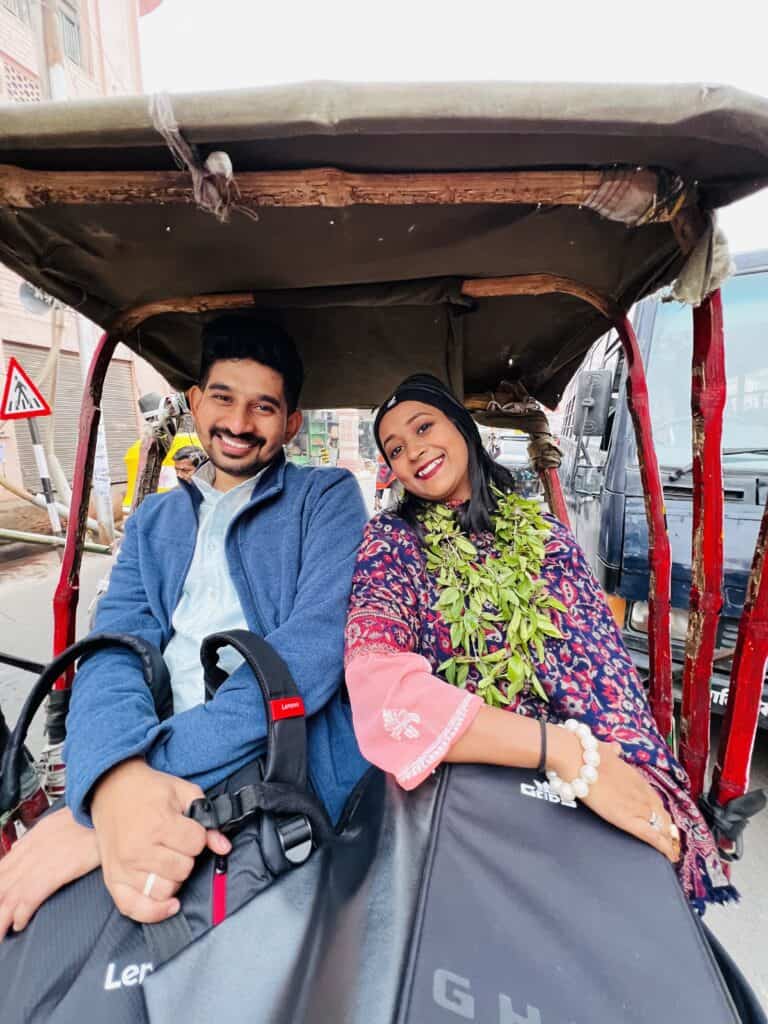
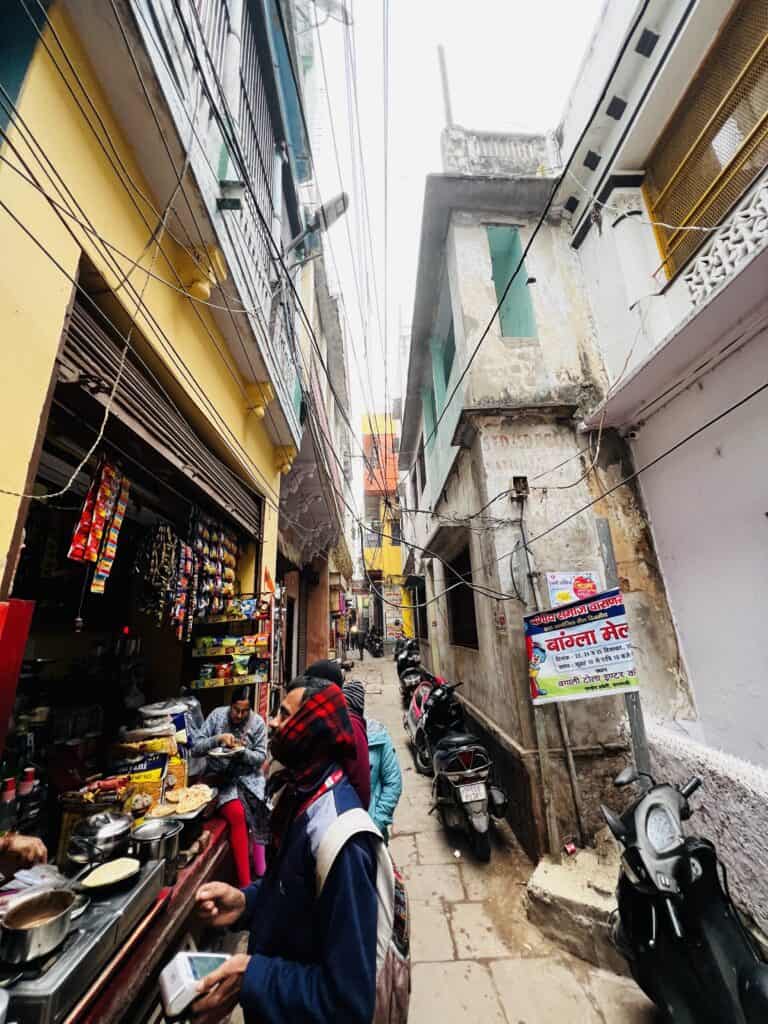
How To Best Experience Varanasi?
Early in the morning, I crossed the ghats, and the fires were still smouldering. The most clichéd picture of Varanasi suddenly came alive: a group of people surrounding the burning pyres on a ghat, circled by a few family members and sadhus, all whitewashed in ash.
Like any other historic town in India, the best way to experience Varanasi is by going slow. You try to fit in a few extra activities in your itinerary and you won’t be able to feel the town.
Having said that, stay away from those ’10 Best Tourist Attractions in Varanasi’ kinds of articles online. Don’t read every Varanasi travel guide you see online and rather explore the town on your own.
During my initial couple of days, I did the same thing. I raced around a few popular attractions, and honestly speaking it did me no favor. I would take a tuktuk, travel from one corner of the city to the other, only to come back and head in the other direction. I moreover hated the chaos.
Once I finished the most sought after attractions (which included the popular BHU University campus and Kashi Vishwanath temple, among other places) I was left with nothing but to spend the time walking along the ghats and connected alleys. And that’s only when I actually felt the skin of Varanasi.
It is by going slow or not doing anything at all, that was how I best understood Varanasi.
If you happen to visit Varanasi during October-November or March, do not miss taking part in two very prominent festivals of India: Diwali and Holi.
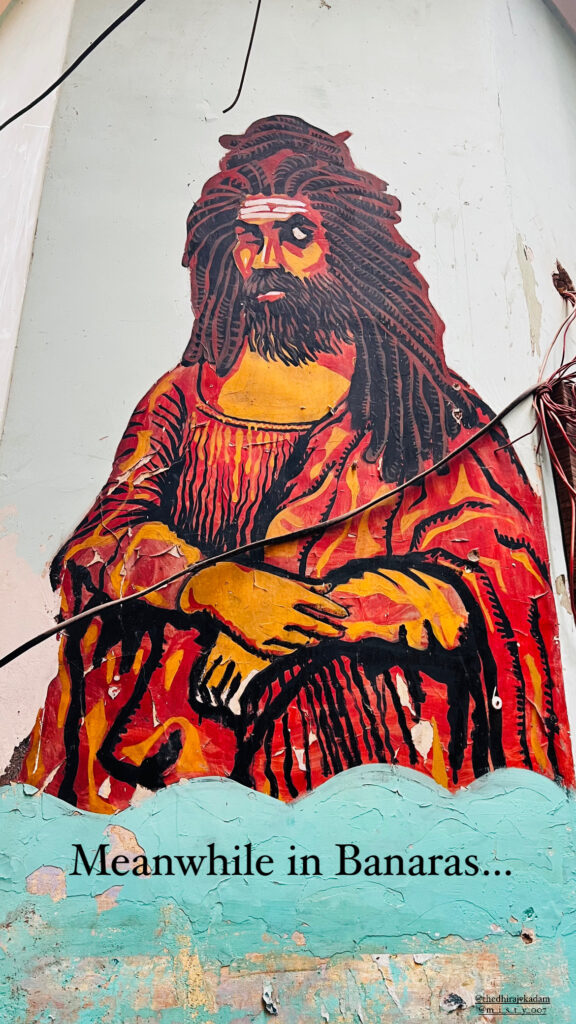
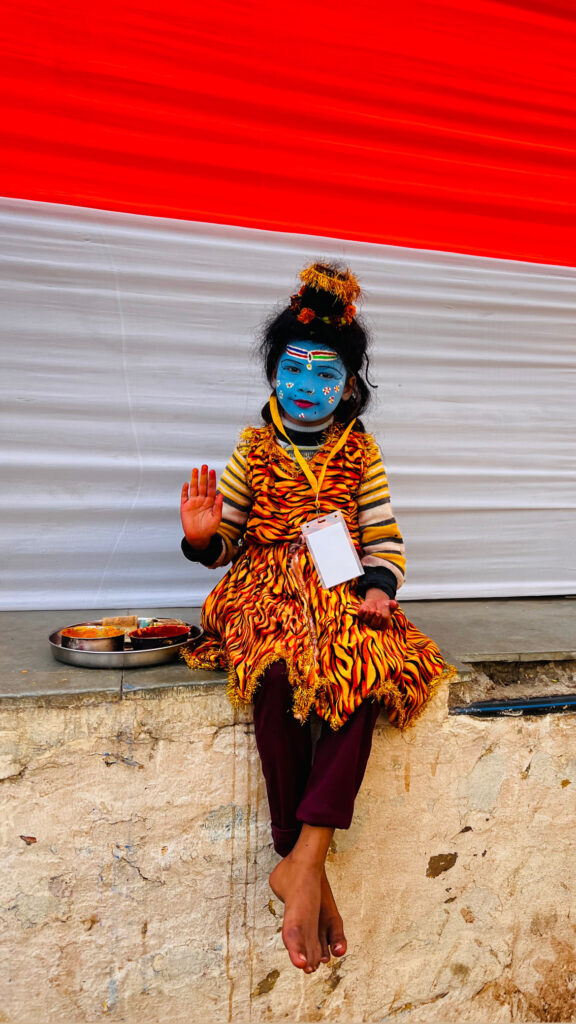
Where To Stay In Varanasi
There are two parts: the old town and the new town.
The best place to stay in Varanasi is the old city – situated along the western bank of the Ganges, from where it extends back to a labyrinth of alleys called galis.
I particularly loved my stay at one of the Ashrams– which was 500 m away from Dashashwamedh Ghat (where the evening Ganga Aarti takes place).
You can rent a room between 300-800 Rupees, pretty much on any of the 80+ ghats in Varanasi. Their prices surge dramatically during peak tourist season, and the availability can moreover be a problem.
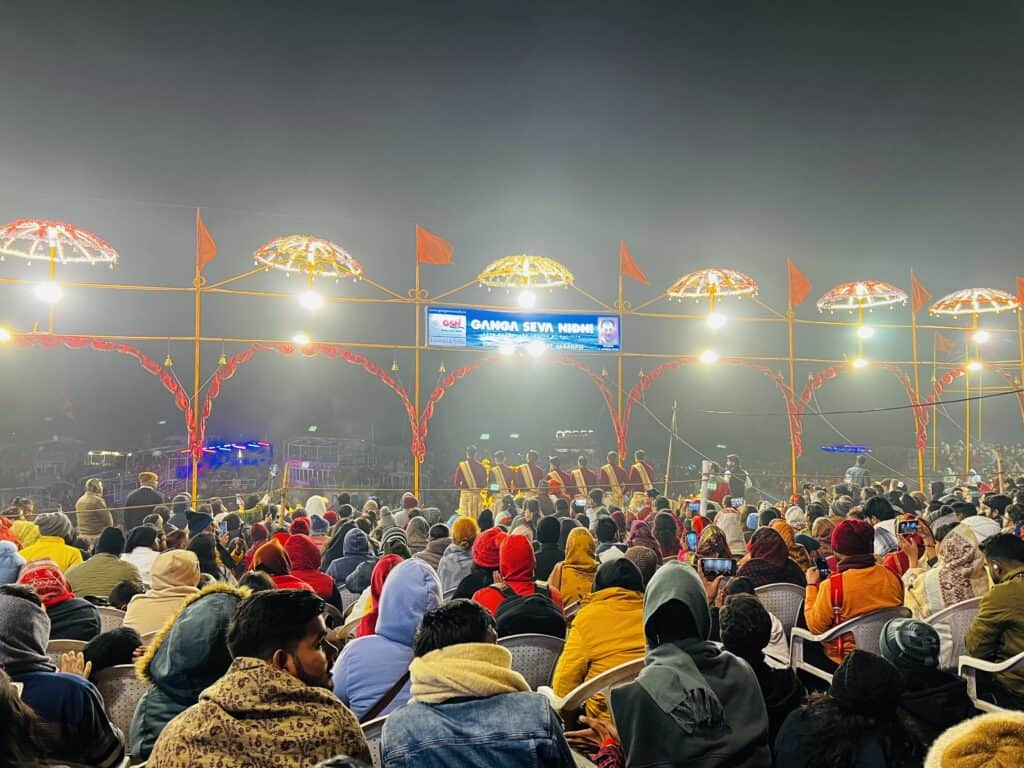
As I mentioned, the best way to explore Varanasi is by doing nothing, and following no routine.
However, if I were to still speak about a few things to see in Varanasi and experiences to try, here are some
- Walking the ghats
- A sunrise/sunset boat ride
- Taking part in the evening Aarti
- Exploring the disoriented galis (or alleys)
- Soaking up the town, doing nothing, and letting it unfold itself
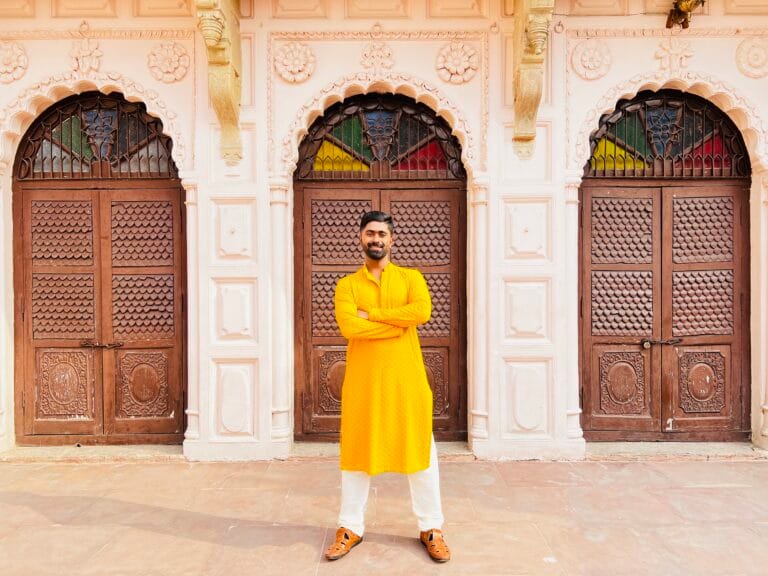



4 Comments
Hey there You have done a fantastic job I will certainly digg it and personally recommend to my friends Im confident theyll be benefited from this site
Usually I do not read article on blogs however I would like to say that this writeup very compelled me to take a look at and do it Your writing style has been amazed me Thank you very nice article
I do not even know how I ended up here but I thought this post was great I dont know who you are but definitely youre going to a famous blogger if you arent already Cheers
Hi my loved one I wish to say that this post is amazing nice written and include approximately all vital infos Id like to peer more posts like this